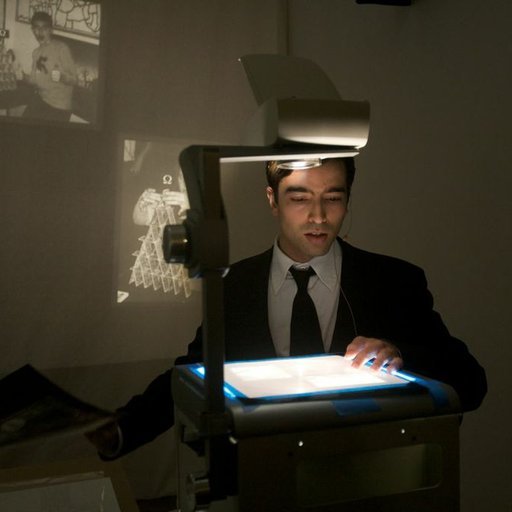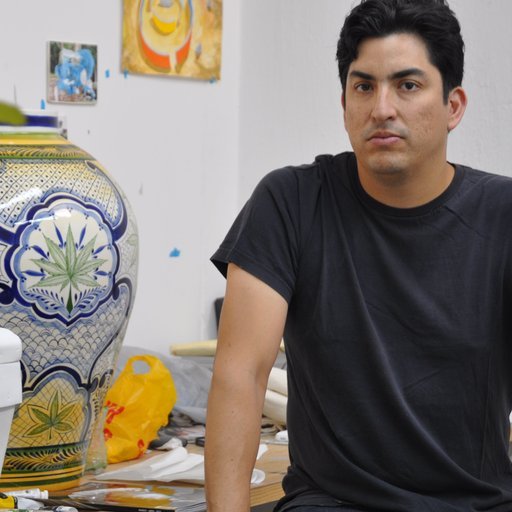Technically, Alison Elizabeth Taylor's paintings have more to do with 15th century than the 21st century. Employing traditional marquetry, a Renaissance technique involving the inlaying of wood strips, the artist creates unusual paintings that combine wood and pigment in a way that has long gone out of style—but yet feels entirely contemporary. For Taylor, marquetry is a way to explore nature's role in contemporary society, with an eye to current world ecological (and economic) crises.
With "Surface Tension," the artist's new exhibition at James Cohan Gallery (on view through November 30), Taylor continues to evolve her rarefied style, devoting her latest body of work to find surprising instances of transcendence in urban sprawl. We spoke with Taylor about how her paintings relate to the decorative arts, how her work is changing, and what first attracted her to using wood in her work.
You have been credited with reviving the use of marquetry in art, updating the popular Renaissance technique of intricately inlaying strips of wood to create representative tableaux. What initially drew you to employing this historic approach?
Years ago, I was collaging wood-grained contact paper into my paintings, and later I started to make contact paper “inlays” using only the paper. When I moved to New York and saw the Studiolo From the Ducal Palace in Gubbio at the Metropolitan Museum of Art, I was inspired to change my materials and process. I needed to work with something that had more substance. Real wood grain is very expressive, and marquetry has a loaded historical trajectory that falls from the high to the low end of the spectrum.
Today marquetry is most often associated with decorative objects, as is pyrography, or the act of burning images into wood, which you have also used in your art. How do you see your work relating to the decorative arts?
I use some processes that are originally in the sphere of the decorative arts because they're adept at creating objects of visual and material interest. Often, I’m harnessing the power of beauty and tethering it to difficult subjects as a way for the viewer to connect with the subject. Relationships between the subject and the surface of an artwork are infinitely more interesting when there's tension. In this culture, the hierarchy of classification systems of artistic value is usually in service of social and economic needs external to the work, so I ignore them and take on whatever subjects are simply best suited to what I want to do.
In your new show at James Cohan Gallery, “Surface Tension,” color seems to play a more important role in your work than ever, and you have apparently shifted your focus from depicting abandoned homes—a recent series that you described as deliberately “mundane and ugly”—to taking on nature. What inspired the change?
Marquetry, the medium I've been working with for years, was never able to fully develop as an art form because historically it has been disregarded as inferior to painting. After working within the traditional parameters of the medium for a long time, it became tempting to break the rules of both marquetry and painting and to begin to combine them. It felt natural to start bringing in bits of paint to work in direct contrast with the flatter though more textural qualities of marquetry. Because of the materials' differences, paint can add a rare degree of depth in a picture. It was just what I needed to convey the otherworldly feeling I encounter in real life through nature.
One of your most acclaimed works is Room, a freestanding installation that creates a trompe l’oeil environment entirely using marquetry, and like many of your works it uses tricks of perspective to painstakingly replicate everyday life. While the invention of perspective in art was one of the signature technological achievements of the Renaissance, in recent art its strict use has largely fallen out of fashion. Is exploiting perspective a particular interest of yours, and, if so, why?
I’m drawn to unfashionable artistic mediums like marquetry, trompe l’oeil, and I guess you could include perspective in the mix. It’s challenging to employ it in compositions, and I like to use it for more than just making a picture. It gives the viewer a disorienting feeling when encountering the works. To have things in a semblance of perspective at a life-size scale creates a feeling of slightly familiar vertigo. Encountering space as we know it to be true, despite being presented as just a 2-D surface that gives an illusion of real space, hopefully triggers larger questions about perception.
You also do naturalistic portraits of people in marquetry. How do you choose who you take on as a subject?
It really varies. Sometimes a person is a stand-in for a larger story. Other times, someone just lends themselves to being depicted in marquetry. Often an interaction won’t leave my mind, so I try to sort it out by drawing the person from memory and recreating them in wood.
What artists have inspired you the most?
Georganne Deen, Fred Tomaselli, Andrea Zittel, David Wojnarowicz, Kara Walker... I’m just getting started here. I could go on and on.
Is there anything you collect yourself?
No, I’m pretty spartan when it comes to owning things—an inclination reinforced by my tiny Brooklyn apartment.
What new projects are you working on now?
An architectural-scale installation inspired by a composite of situations I’ve observed.
























